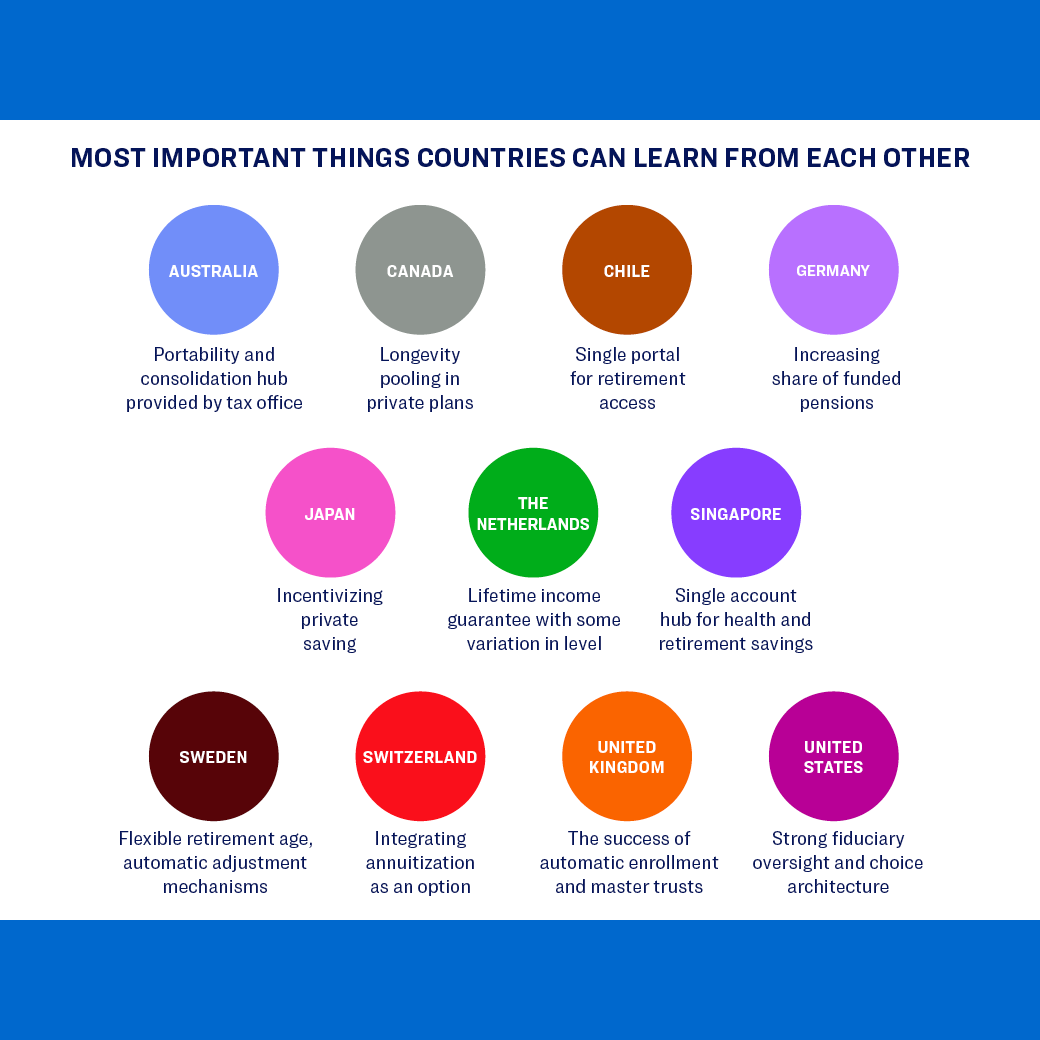This TIAA Institute report examines how eleven countries are addressing the critical challenge of converting retirement savings into sustainable income, as traditional defined benefit plans give way to defined contribution systems worldwide. The research provides an international comparison of approaches for providing retirement income, offering actionable insights for building more secure retirement systems in an era of increasing longevity and demographic pressures.
Summary
Countries worldwide are reforming their retirement systems in response to longer lifespans and declining worker-to-retiree ratios that make traditional defined benefit plans increasingly unsustainable. This report analyzes retirement systems in eleven countries—Australia, Canada, Chile, Germany, Japan, the Netherlands, Singapore, Sweden, Switzerland, the United Kingdom, and the United States—and examines how each addresses the fundamental challenge of converting accumulated savings into guaranteed income in retirement. The research reveals a global trend toward hybrid systems that aim to combine the lifetime income guarantees of traditional pensions with the flexibility and financial sustainability of defined contribution plans. Key findings demonstrate that when annuitization is seamlessly integrated into the process for accessing retirement savings, participants are far more likely to choose guaranteed income products that support long-term financial security.
Key insights
- Contribution rates directly determine adequacy: There are no shortcuts—countries with the highest retirement replacement rates also maintain the highest mandatory contribution rates, with systems achieving 60-90% replacement rates requiring combined employer-employee contributions of 25-37%.
- Integration is key to income conversion success: Countries like Chile and Switzerland that seamlessly incorporate annuity decisions into the process for accessing retirement savings achieve significantly higher annuitization rates (50-60%) without mandates, compared to systems where participants must independently seek an annuity provider (under 10% adoption).
- Analysis from Chile and Switzerland reveals that participants in middle wealth brackets are most likely to choose annuities when offered, while very low-balance retirees cannot meet minimum thresholds and high-net-worth individuals prioritize flexibility and bequest motives.
- Guaranteed income does not have to mean a fixed annuity. Some countries, such as Sweden or Japan, already use automatic adjustment mechanisms to keep state pension benefits sustainable. Likewise, retirees in Sweden or the Netherlands can allocate some of the savings to variable annuities, where part of the assets stay invested in the market. These provide potentially higher but more volatile income in retirement.




